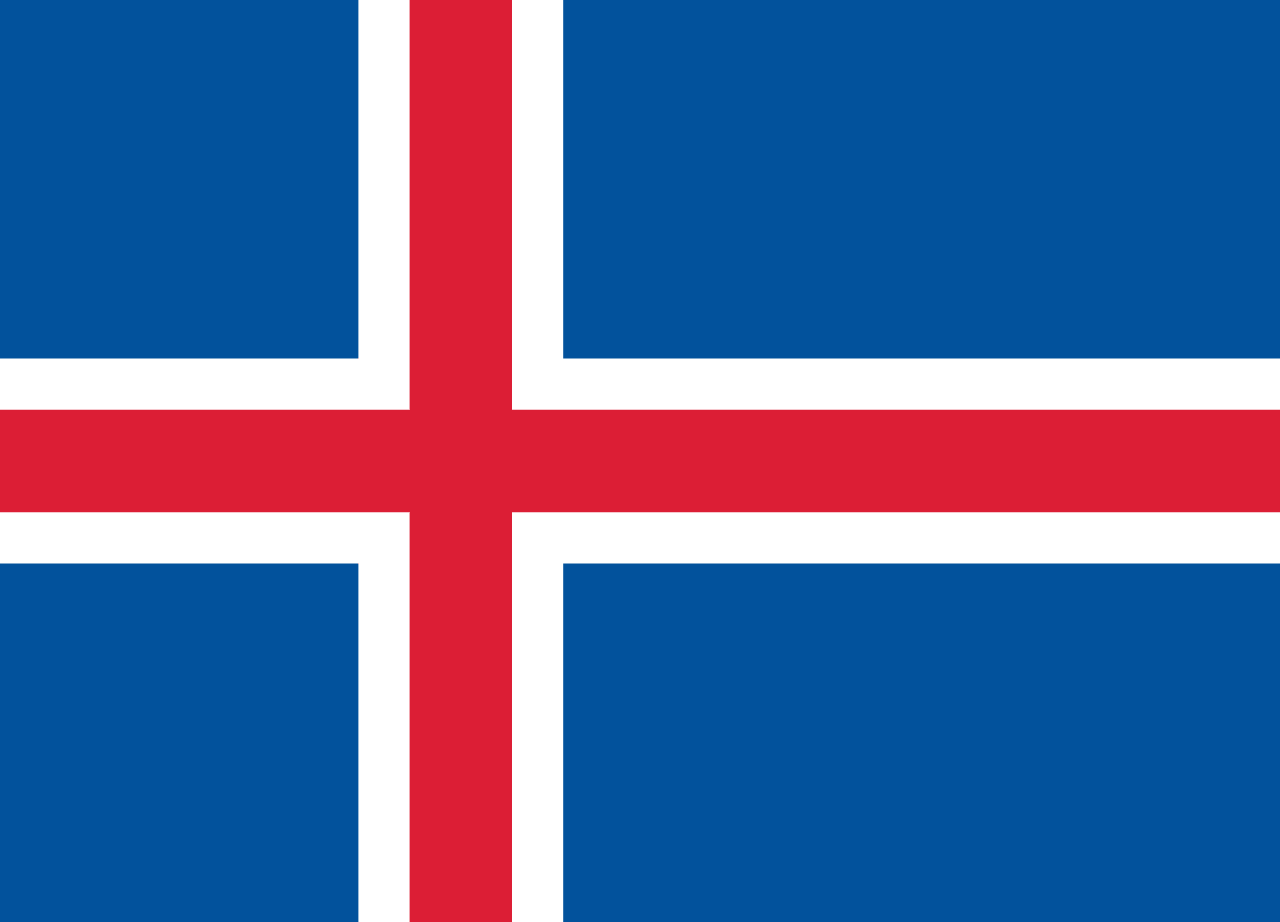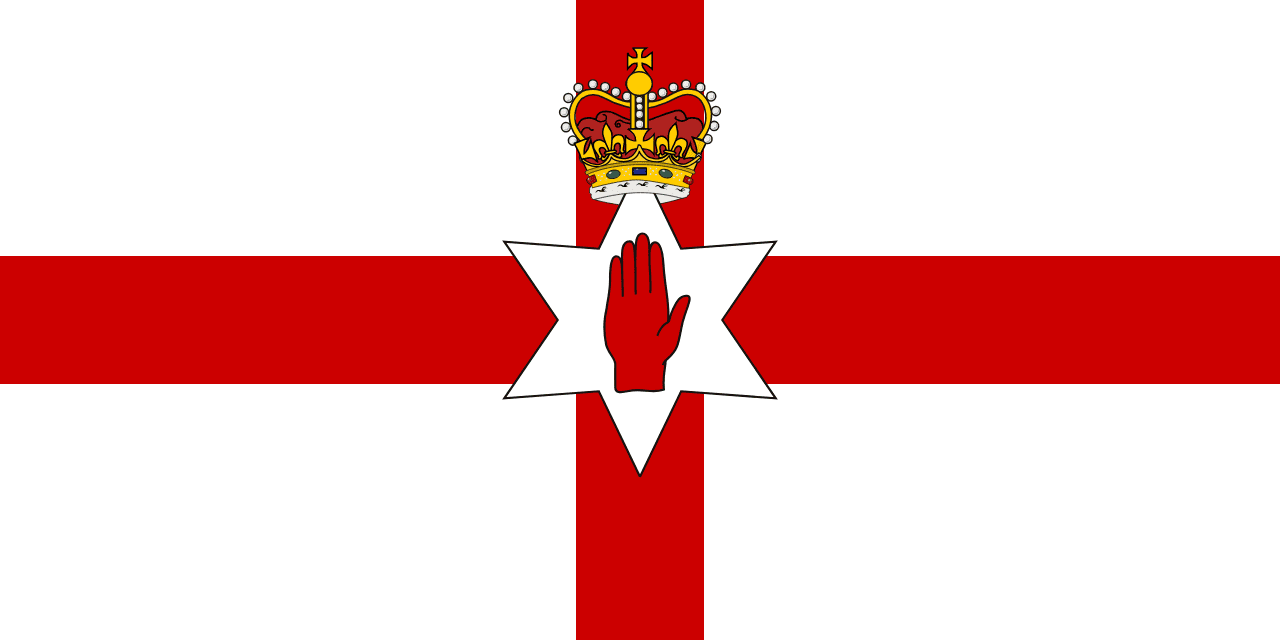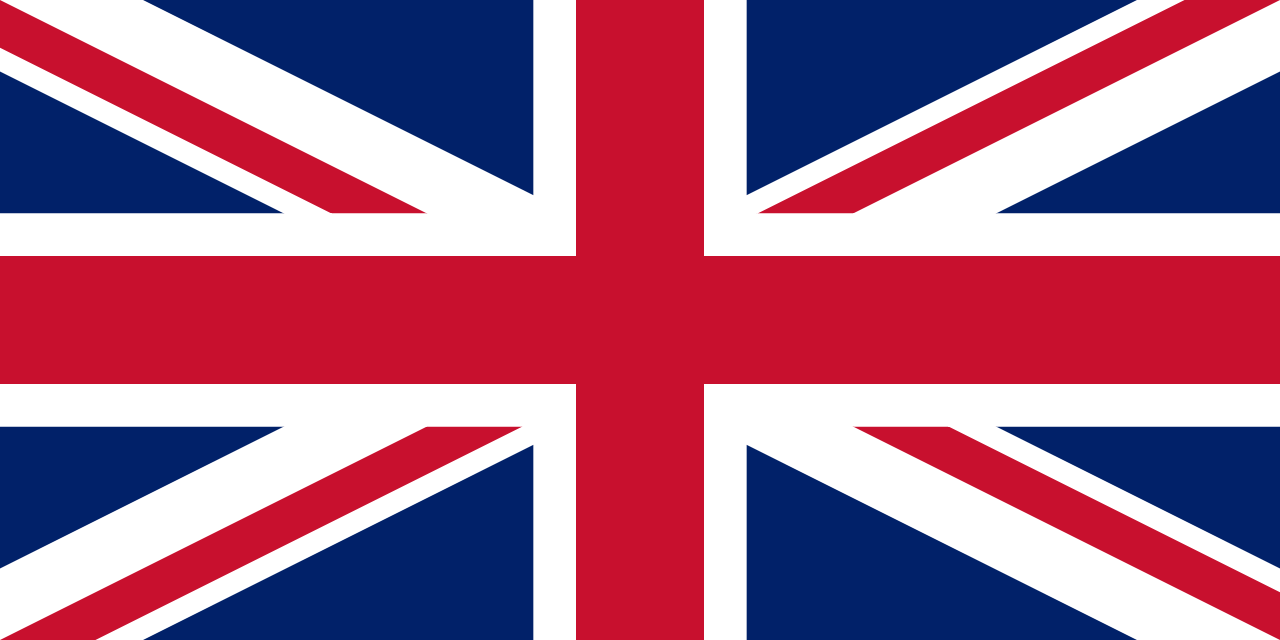Iceland Flag Meaning
A blue field with a white-bordered red Nordic cross slightly offset toward the hoist, representing Iceland's Nordic heritage, Christian history, and the natural elements of fire and ice that define the island nation.
- Continent
- Europe
- Adopted
- 1944
- Ratio
- 18:25
- Colors
- blue, white, red
- Designer
- Matthías Þórðarson

Symbolism
Blue Field: Represents the Atlantic Ocean that surrounds Iceland and the clear blue skies over the island, symbolizing the maritime heritage of the Icelandic people and their connection to the sea for fishing and trade.
White Cross Border: Represents the glaciers and snow that cover much of Iceland year-round, symbolizing the ice element of the 'Land of Fire and Ice' and the purity of the Nordic Christian heritage.
Red Cross: Represents the volcanic fire that formed Iceland and continues to shape the island through active volcanism, symbolizing the fire element and the dynamic geological forces beneath the island.
Nordic Cross Design: Connects Iceland to its Scandinavian heritage and Nordic identity, representing the shared cultural, historical, and religious traditions with Denmark, Norway, Sweden, and Finland.
History
- 874-1262: During the Commonwealth period, Iceland had no official flag, with various clan and family banners used by different chieftains and the eventual Christian cross symbols introduced after Christianization in 1000 CE.
- 1262-1380: Under Norwegian rule, Iceland flew Norwegian royal banners and symbols, marking the end of the independent Commonwealth and the beginning of foreign sovereignty over the island.
- 1380-1918: During the union with Denmark, Iceland was governed under Danish sovereignty, flying Danish flags and symbols while maintaining distinct Icelandic cultural identity and language.
- 1913-1918: Matthías Þórðarson designed the first Icelandic flag with blue and white Nordic cross as a symbol of growing independence movement, leading to increased demands for self-governance.
- December 1, 1918: Iceland gained sovereignty as the Kingdom of Iceland in personal union with Denmark, officially adopting a blue flag with white Nordic cross while sharing the Danish monarch.
- June 17, 1944: Iceland declared full independence as a republic, adding the red cross to create the current design, symbolizing complete sovereignty and the end of all ties with the Danish crown.
- 1944-Present: The flag has represented the Republic of Iceland through its development into a modern Nordic democracy, NATO membership, and its role as a leader in renewable energy and environmental protection.
Trivia
- Iceland's flag is the only Nordic cross flag to feature three colors (blue, white, red), making it distinct from the two-color designs of its Scandinavian neighbors.
- The flag represents the most sparsely populated country in Europe, with only about 370,000 people living on an island the size of South Korea.
- Iceland has no standing army and is considered one of the most peaceful countries in the world, with the flag representing a nation that has never been involved in armed conflict.
- The flag flies over a country that is powered almost entirely by renewable energy from geothermal and hydroelectric sources, making it a leader in clean energy.
- Iceland has the world's oldest continuous parliament, the Althing, established in 930 CE at Þingvellir, which is also a UNESCO World Heritage Site.
- The flag represents a country with the highest literacy rate in the world and more published books per capita than any other nation.
- Iceland sits on the Mid-Atlantic Ridge, where the North American and Eurasian tectonic plates meet, creating unique geological features like geysers and volcanic islands.
- The flag flies over the land of the midnight sun in summer and aurora borealis (northern lights) in winter, offering unique natural phenomena.
- Iceland has no McDonald's restaurants since 2009, making it one of the few developed countries without this global franchise under its flag.
- The Blue Lagoon geothermal spa is one of Iceland's most famous attractions, representing the country's unique use of geothermal energy for recreation and healing.
- Iceland's flag represents a country where most of the population believes in elves and hidden people (huldufólk), maintaining strong connections to folklore and mythology.
- The flag flies over a country that played a crucial role in ending the Cold War, hosting the 1986 Reykjavik Summit between Reagan and Gorbachev.
- Iceland has more Nobel Prize winners per capita in literature than any other country, with Halldór Laxness winning in 1955.
- The flag represents a country where the majority of homes are heated by geothermal energy, and greenhouses grow tropical fruits using volcanic heat.
- Iceland's banking crisis in 2008 led to the 'Pots and Pans Revolution,' demonstrating the democratic spirit represented by the flag through peaceful protest and government change.
Related Countries

Scotland
Europe
The Saltire - white diagonal cross of Saint Andrew on azure blue field, one of the world's oldest national flags.

Northern Ireland
Europe
The Ulster Banner - featuring the Red Hand of Ulster on a white field with the Union Jack canton and crown, served as Northern Ireland's official flag from 1953-1972 and remains in unofficial use today.

United Kingdom
Europe
The Union Jack combines the crosses of Saint George (England), Saint Andrew (Scotland), and Saint Patrick (Ireland) on a blue field, representing the political union of England, Scotland, and Ireland under one crown, though Wales is not directly represented in the flag design.

Ireland
Europe
Three equal vertical stripes of green, white, and orange, representing the hope for peace between the Catholic and Protestant communities of Ireland, with the tricolor symbolizing unity and the aspiration for a harmonious Irish nation.

Norway
Europe
Nordic cross design with red field, white cross, and blue outline, symbolizing Norwegian independence and Scandinavian heritage.

Wales
Europe
Y Ddraig Goch - the red dragon passant on green and white horizontal field, representing Welsh heritage and Celtic identity.